Unlock the secrets to effective on-page SEO with our advanced tactics. Stay ahead of the competition in 2024 and optimize your website for success.
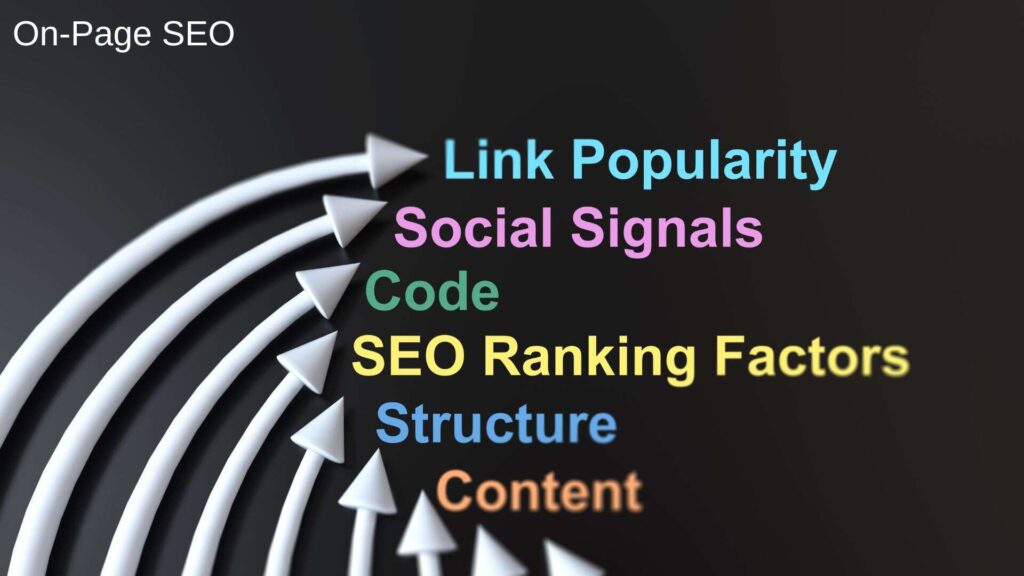
On-Page SEO Overview
Importance of On-Page SEO
On-page SEO is vital for optimizing individual pages to secure better ranking in organic results. By strategically placing target keywords in key areas like the page title and meta description, websites can enhance their visibility to search engines.
Optimizing on-page elements ensures that search engines understand the content of each page, increasing the likelihood of ranking higher in search results. This process involves optimizing various factors such as title tags, meta descriptions, and internal links to improve overall site SEO.
Key On-Page SEO Factors
When it comes to on-page SEO, elements like page titles, meta descriptions, and title tags are crucial for enhancing a website’s visibility. These components provide search engines with valuable information about the content of each page, influencing how they appear in search results.
Including relevant keywords in these elements helps search engines understand the context of a page, making it more likely to rank for specific queries. Moreover, optimizing rich snippets can further improve click-through rates by providing users with additional information directly on the search engine results page.
Importance of On-Page SEO
Optimizing Page Titles and Meta Descriptions
When it comes to on-page SEO, optimizing page titles and meta descriptions is crucial. These elements play a significant role in improving organic results. By crafting compelling titles and descriptions, you can attract more clicks from search engine users.
Ensuring that your page titles are concise, descriptive, and contain relevant keywords can significantly impact your SEO efforts. Similarly, well-crafted meta descriptions provide a brief summary of the page’s content, enticing users to click through to your website.
Effective Use of H1 Tags for Page SEO
Utilizing H1 tags effectively is essential for enhancing page SEO. The H1 tag serves as the main heading of a page, signaling its topic to search engines. Including relevant keywords in your H1 tags helps search engines understand the content of your page better, ultimately improving its visibility in search results.
By structuring your content with clear headings and subheadings, including optimized H1 tags, you can enhance the overall readability and SEO performance of your pages.
Avoiding Keyword Stuffing in Page Content
One common mistake to avoid in on-page SEO is keyword stuffing. While using relevant keywords is important for optimization, overloading your content with keywords can harm your rankings. Search engines penalize websites that engage in keyword stuffing, as it compromises the quality and user experience of the content.
Instead of focusing solely on incorporating keywords, prioritize creating high-quality, valuable content that naturally includes relevant keywords. This approach not only improves your SEO but also enhances user engagement and satisfaction.
Enhancing Page Speed for Improved Ranking Pages
Improving page speed is another critical aspect of on-page SEO that directly impacts the ranking of your pages. Slow-loading pages not only frustrate users but also receive lower rankings from search engines. Optimizing images, reducing server response times, and leveraging browser caching are some effective strategies to enhance page speed.
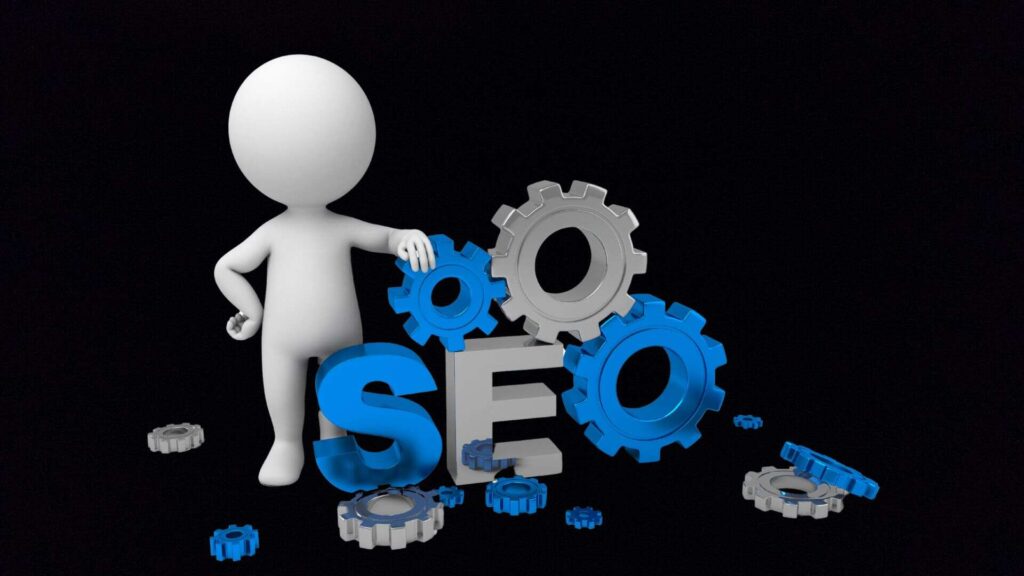
URL Optimization Techniques
Target Keywords
Select target keywords thoughtfully to enhance URLs for increased organic traffic and better organic results. By strategically incorporating these keywords, you can boost your site SEO and page SEO effectively.
Keyword Placement in URLs
Integrate target keywords into URL structures to elevate your site’s search engine optimization. This practice not only enhances page SEO but also improves the overall visibility of your content.
Avoiding Keyword Stuffing
Steer clear of excessive keyword stuffing within URLs as it can lead to penalties from major search engines. Maintaining a natural keyword density is crucial for sustainable SEO success.
Utilizing Relevant Keywords
Incorporate relevant keywords in essential elements such as title tags, meta descriptions, and H1 tags within the URL. This approach not only helps in achieving rich snippets but also contributes to enhanced on-page SEO performance.
Advanced SEO Strategies
Keyword Research
Conduct thorough keyword research to discover target keywords and related keywords for each page. Utilize tools like Google Keyword Planner to identify high-volume search queries.
Optimize your title tags, meta descriptions, and H1 tags by incorporating relevant target keywords. This practice enhances on-page SEO, making it easier for search engines to understand your content.
Page SEO Template
Implement a page SEO template to maintain consistency in optimizing all pages across your website. This ensures that every page is structured correctly for search engines to crawl effectively.
- Pros:
- Ensures uniform optimization standards.
- Streamlines the optimization process for new pages.
- Cons:
- Requires initial setup time.
- May need periodic updates as SEO trends evolve.
Keyword Usage
Avoid keyword stuffing and instead focus on integrating primary and secondary keywords naturally within your content. This approach helps in improving organic results by making your content more relevant to search queries.
When creating content, strategically place your target keywords within the headings, subheadings, and body text. Balance the use of keywords to maintain readability while signaling relevance to search engines.
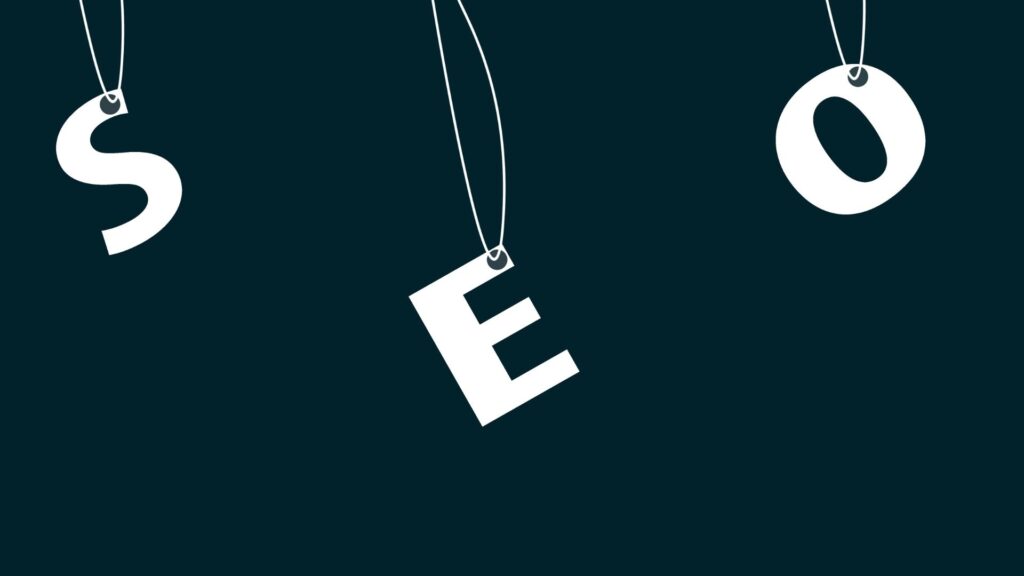
Complete On-Page SEO Guide
Optimizing Page Titles
To enhance page titles, ensure they are concise, relevant, and include primary keywords for each page. This optimization boosts visibility and click-through rates in search engine results.
Crafting Meta Descriptions
Craft meta descriptions that are compelling, informative, and under 160 characters. These descriptions provide a snapshot of the content, enticing users to click on your link in search results.
Enhancing H1 Tags
Utilize H1 tags effectively by making them unique, descriptive, and incorporating relevant keywords. Properly optimized H1 tags improve the structure and readability of site pages.
Implementing a page SEO template streamlines the process of optimizing individual pages by providing a standardized format. This consistency across all site pages ensures that each page is fully optimized for improved organic traffic and better rankings in search engine results.
Improving page speed is crucial for both user experience and search engine rankings. Faster loading times lead to lower bounce rates and higher engagement, positively impacting SEO performance. Consider optimizing images, leveraging browser caching, and minimizing server response time to enhance page speed.
Integrating rich snippets into your site pages can significantly impact their visibility in organic search results. Rich snippets provide additional information about the content directly on the search engine results page, increasing click-through rates and driving more organic traffic to your site.
Content Optimization for SEO
Strategic Keyword Placement
Optimize page content by strategically placing relevant keywords throughout the text. This practice improves site SEO and boosts organic traffic.
Utilize title tags and meta descriptions effectively to enhance on-page SEO. These elements play a crucial role in attracting more organic results from search engines.
Valuable Information for Search Engines
Implement H1 tags, header tags, and image alt text to provide search engines with valuable information about the content. These elements contribute significantly to improving page SEO.
- Bullet list:
- Strategic keyword placement enhances site SEO.
- Title tags and meta descriptions attract organic results.
- H1 tags, header tags, and image alt text provide valuable information for search engines.
Quality Content Creation
Avoid keyword stuffing and focus on creating high-quality, engaging content. This approach aligns with SEO best practices, leading to rich snippets in search results.
- Numbered list:
- Avoid keyword stuffing.
- Focus on creating engaging content.
- Align content creation with SEO best practices.
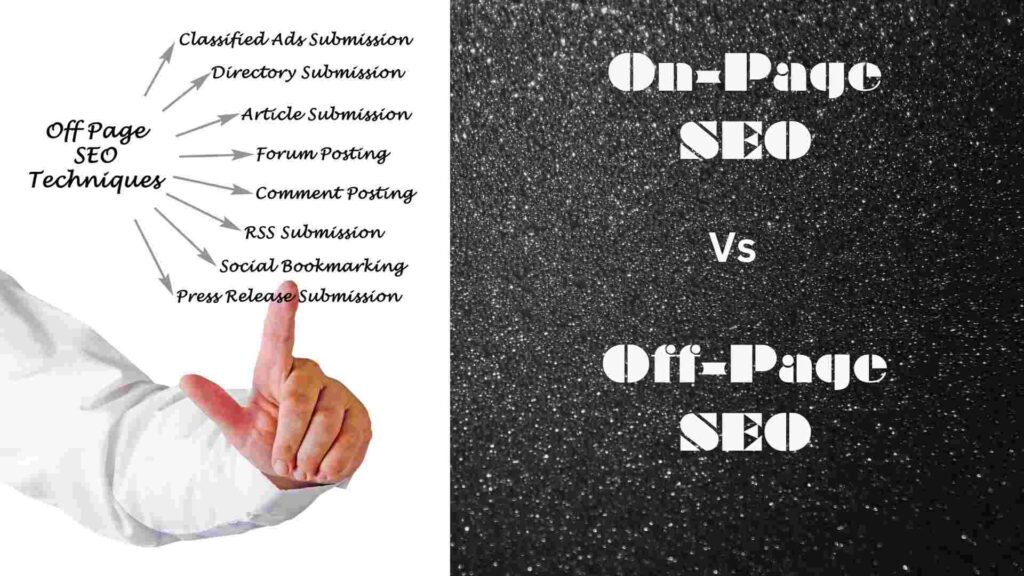
Comparison: On-Page vs. Off-Page
Importance: On-Page Factors
On-page SEO primarily focuses on optimizing elements within a website to improve its search engine rankings. It involves site pages, page content, and page speed optimization.
Internal factors like page titles play a crucial role in ensuring that search engines understand the content of each page accurately. By incorporating relevant keywords into page titles, websites can attract more organic traffic.
Optimization: Individual Pages
When it comes to on-page SEO, the emphasis is on enhancing individual pages for better visibility in search results. Each page must have unique and valuable content that aligns with users’ search queries.
By optimizing individual pages, websites increase their chances of ranking higher in search engine results pages (SERPs). This optimization includes improving page content, using appropriate keywords, and structuring the page effectively.
Significance: Internal Links and Title Tags
Internal links are vital for on-page SEO as they help search engines navigate a website’s content efficiently. By including relevant internal links within content, websites can improve user experience and enhance their SEO performance.
Another critical aspect of on-page SEO is optimizing title tags. These HTML elements specify the title of a web page and appear in search results. Well-crafted title tags containing relevant keywords can significantly impact a page’s visibility and click-through rates.
Strategic Keyword Placement
Conduct Research
Conduct thorough keyword research to identify target keywords for your content. Understand the search queries of your audience to tailor your content effectively.
Utilize tools like Google Keyword Planner and SEMrush to discover popular keywords in your niche. Look for both short-tail and long-tail keywords to diversify your content strategy.
Implement Keywords
Implement strategic keyword placement throughout your content to enhance SEO performance. Integrate primary and secondary keywords naturally within your text.
Ensure that the keywords flow seamlessly within the content, providing value to the reader while also signaling relevance to search engines. Avoid overusing specific keywords, as this can lead to keyword stuffing penalties.
Optimize On-Page SEO Elements
Utilize primary keywords in title tags, headings, and meta descriptions to optimize on-page SEO. Craft compelling titles that include the main target keyword prominently.
Incorporate relevant keywords in subheadings and body paragraphs to signal the topic’s depth to search engines. This helps improve visibility in organic results and drives more organic traffic to your site.
Internal Linking Strategies
Anchor Text
When implementing internal linking, use target keywords in the anchor text to signal the content’s relevance to search engines.
Strategically place internal links within your content to direct users and search engines to other site pages. By incorporating related keywords in anchor text, you enhance the SEO performance of your website.
Frequency and Placement
Avoid excessive internal linking, as it can lead to keyword stuffing and disrupt the natural flow of your content. Instead, focus on providing value by connecting relevant pages through well-placed internal links.
Utilize header tags and subheadings to create a hierarchy of information on your website. This not only improves user experience but also helps search engines understand the structure of your content.
External Linking Best Practices for On-page SEO
Utilizing External Links
When incorporating external links on your website, ensure they lead to authoritative websites to boost credibility. These links should provide additional value and relevant information for your readers.
Internal Linking Importance
Internal linking is crucial for guiding users to other relevant pages within your site. This practice not only enhances user experience but also helps in reducing bounce rates.
Strategic Outgoing Links
Implement outgoing links strategically by connecting to reputable sources. By doing so, you can establish trust and authority with search engines, improving the overall site SEO.
Optimization of Header Tags and Title Tags
Optimizing header tags, title tags, and page content with relevant keywords is essential for enhancing organic traffic. By strategically placing these keywords, you can increase visibility in search engine results pages.
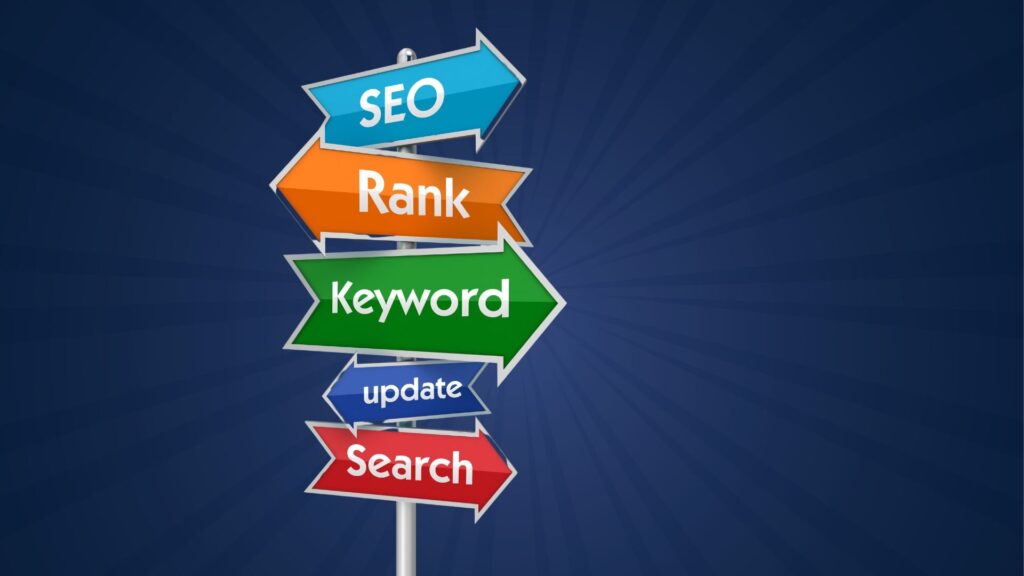
Image Inclusion and Optimization
Image Alt Text
When adding images to your website, include relevant keywords in the image alt text to improve on-page SEO. This descriptive text helps search engines understand the content of the image.
Image Compression for Faster Loading
Optimize images by compressing them to ensure a faster page loading speed. Large image files can slow down your website, affecting user experience and SEO rankings.
Strategic Image Utilization
Utilize images strategically to enhance the overall page content and improve user experience. Visual elements not only make your content more engaging but also help with SEO optimization by keeping visitors on your page longer.
Internal Linking within Images
Implement internal linking within images to boost site SEO and increase organic results. By linking relevant pages or posts within your website through images, you can improve navigation and encourage visitors to explore more of your content.
Enhancing Page Speed
Minimizing Image Sizes
Optimize page speed by reducing image sizes to improve loading times for site pages. Large images can slow down the website, negatively impacting user experience.
Implementing techniques like image compression and choosing the right file format such as JPEG or PNG can significantly reduce image sizes without compromising quality. This optimization not only enhances page speed but also contributes to better SEO performance.
Leveraging Browser Caching
To enhance page speed, leverage browser caching to store static resources locally on a user’s device. By enabling caching, returning visitors experience faster load times as their browsers don’t need to re-download previously accessed files.
This technique reduces server load and saves time by serving cached content instead of retrieving it from the server each time a user visits the site. It is an effective way to improve user experience and boost site performance.
Effective Use of Title Tags and Header Tags
Utilize title tags, H1 tags, and header tags strategically throughout your content to improve readability and optimize site pages for search engines. Title tags are crucial for conveying the topic of a page concisely and accurately.
H1 tags serve as primary headings that outline the main content of a page, while header tags (H2, H3, etc.) break down the content into sections for better organization. By structuring your content with relevant headers and titles, you make it easier for both users and search engines to navigate and understand your site.
Frequently Asked Questions
How do you optimize a page?
To optimize a page, focus on strategic keyword placement, meta tags optimization, quality content creation, internal linking, and improving page speed. Ensure the content is valuable to users and easy to read for better SEO performance.
What Is On-Page SEO & Why Is It Important?
On-Page SEO refers to optimizing web pages to rank higher and earn more relevant traffic in search engines. It is crucial as it helps search engines understand your content better, improves user experience, and boosts organic visibility for targeted keywords.
What are the key elements of On-Page SEO?
Key elements of On-Page SEO include optimizing URLs, title tags, meta descriptions, headings structure, image alt attributes, internal linking, content quality, keyword placement, mobile-friendliness, and page speed.
How does internal linking impact On-Page SEO?
Internal linking enhances website navigation and helps distribute link equity across pages. It establishes a hierarchy within the site structure for search engines to understand the importance of various pages. Proper internal linking can improve indexing and ranking of web pages.
Why is optimizing title tags crucial for On-Page SEO?
Title tags are essential for both users and search engines as they provide a concise description of the webpage’s content. Optimizing title tags with relevant keywords can improve click-through rates in search results and signal the topic relevance to search engines.
